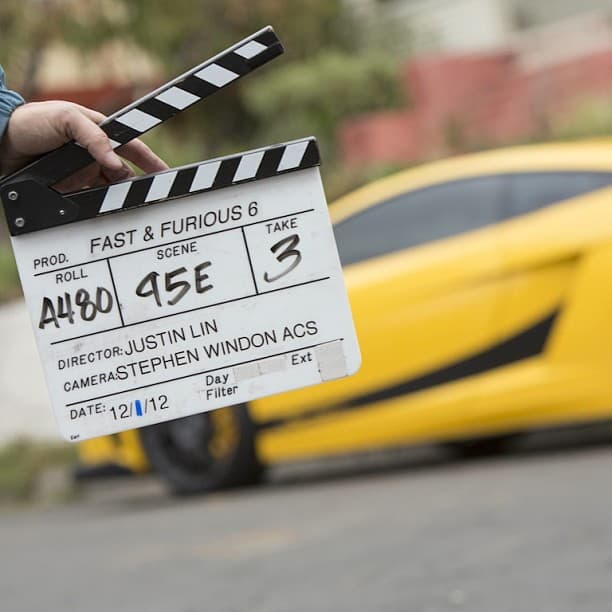When the original The Fast & the Furious hit the silver screen in 2001, no one foresaw the behemoth the subsequent series would become.
Eight — so far — films. Video games. Theme park attractions. More than $5 billion in worldwide box-office sales.
“When the first Fast & Furious came out, nobody really knew what to expect,” said Cody Walker, the brother of late star Paul Walker. “It took the whole world, I think, by surprise.”
He’s not wrong. I remember, after the release, every teen thought Mom and Dad’s minivan would have looked way better if it were slammed and had some nitrous oxide under the middle bench seat. Everyone also thought their car was ready to race for slips.
The addictive nature of the film, by most standards, didn’t make sense. It’s not the pinnacle of cinema. It’s not a shining example of plausible action. It’s not even, by typical definitions, that good.
But people loved it. What began as a movie about illegal street racing and relatively small-time criminals has ballooned into a series of heist action films that nearly always have some sort of international consequence (of course, the day is always saved in the end). They’re always quick to entertain and promise insane stunts paired with cool cars.
It is now the seventh-highest grossing film franchise in history. It beat out Transformers. It topped Jurassic Park. It left Pirates of the Caribbean in its wake.
Why? There’s no one answer, but part of it starts with the cast.
As Cody Walker pointed out, his brother wasn’t a Hollywood A-lister. Vin Diesel had starred in a few movies, but nothing headline-grabbing yet.
That didn’t matter. Audiences loved it. Surrounded by a few other smaller names – Jordana Brewester, Michelle Rodriguez, etc. – Diesel and Paul Walker formed an off-screen chemistry that translated onto the big screen. Of course, that cast would later grow to include heavy Hollywood hitters such as Gal Gadot, Dwyane Johnson and Charlize Theron.
The cast has a feeling of inclusiveness, something Craig Lieberman, the technical director on the first two films, said brought in a bigger audience. It didn’t matter what color, creed or make you identified with.
“If you love cars, you’re welcome here,” he said.
The cars also helped. For the first time, theater crowds were shown the (highly glamorized) world of illegal street racing filled with cars shipped across the Pacific, not built in Detroit. It had never been done before and audiences loved it.
It also got people involved in the tuner scene. For the first film, Lieberman had to beg for parts for the hero cars. That changed after the release. Many of the cars in the first film have Axis Sport wheels, simply because Lieberman was friends with the company’s owner who wanted to offload some product.
“After the movie, he couldn’t keep them on the shelf,” Lieberman said. “These kids, anything they see, they’re like, ‘I have to have it, I have to have it.’”
That boom was industrywide.
“The years following The Fast & the Furious 1 and 2 were the golden years for the tuner segment,” he said. “Sales at Sparco went up 1,500 percent, Greddy couldn’t stop selling the exhausts that were on these cars. Everybody wanted the exact parts that were on the cars. It went on for years. It drove $150-plus billion in sales for aftermarket parts from the car-modifying hobby.”
But the biggest reason for the film’s success is one of the simplest: It became part of pop culture.
After the first film, Lieberman consulted on a slew of TV shows that all wanted to cash in on the Furious universe. The title began popping up all over, even including weather reports about a rapidly moving hurricane, according to Lieberman.
But it was more than parts sales and a box-office boom. The movie resonated with non-car people and enthusiasts alike, but especially with younger audiences. Even groups quick to mock the film still watched it. A lot.
“After the young people – who knew everything at 18 – were done bashing the movie on the forums, they all admitted years later, to me and others at car shows, that they’ve seen the movie 100 times,” Lieberman said.
Seventeen years on and the franchise is still going strong. Two more movies are likely in the works, along with possible off-shoots and TV shows. Who knows what other branches the series will grow.
But one thing is for certain: The Fast and the Furious changed car cinema forever and brought a whole new generation behind the wheel.
Read our other “The Fast and the Furious” coverage:
- • ‘Fast & Furious’ still driving some car prices nearly 20 years later
- • Like James Dean, Paul Walker has become an icon for a generation of car enthusiasts
- • Let’s chat: ‘Fast & Furious,’ charity work and cars with Cody Walker
- • Meeting Paul Walker, a laid-back good guy unsullied by movie fame
- • What almost was: Meet the man who changed the course of ‘The Fast & the Furious’





